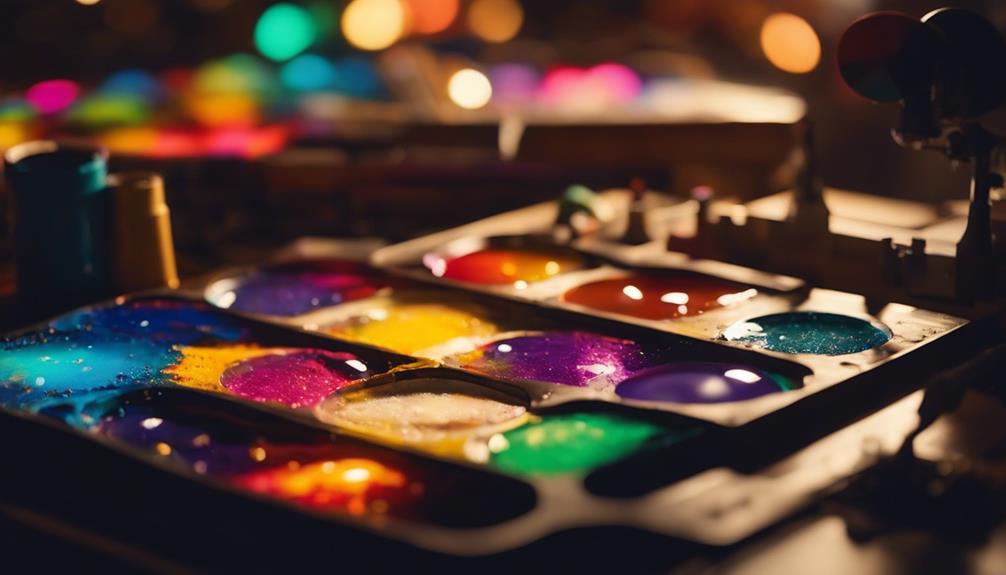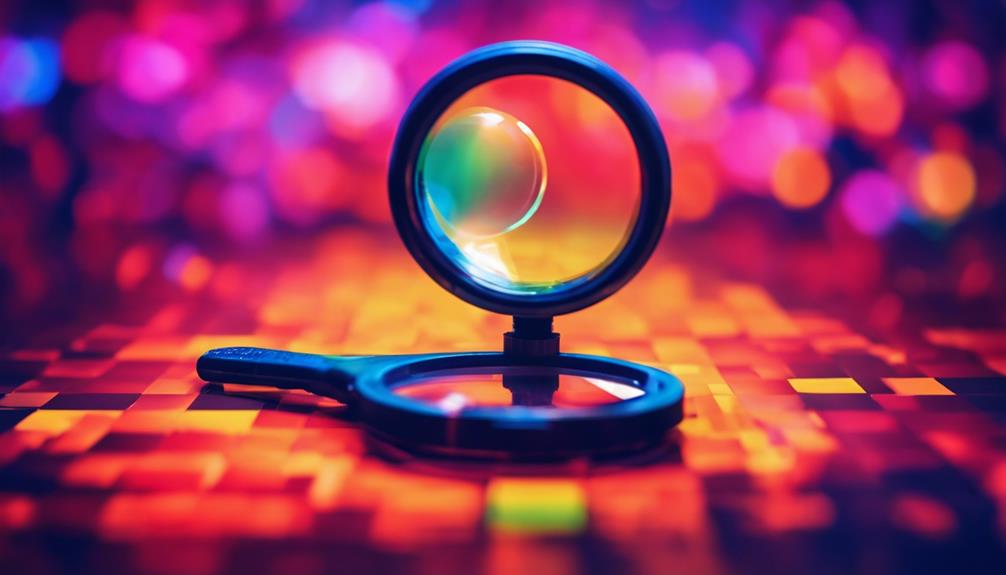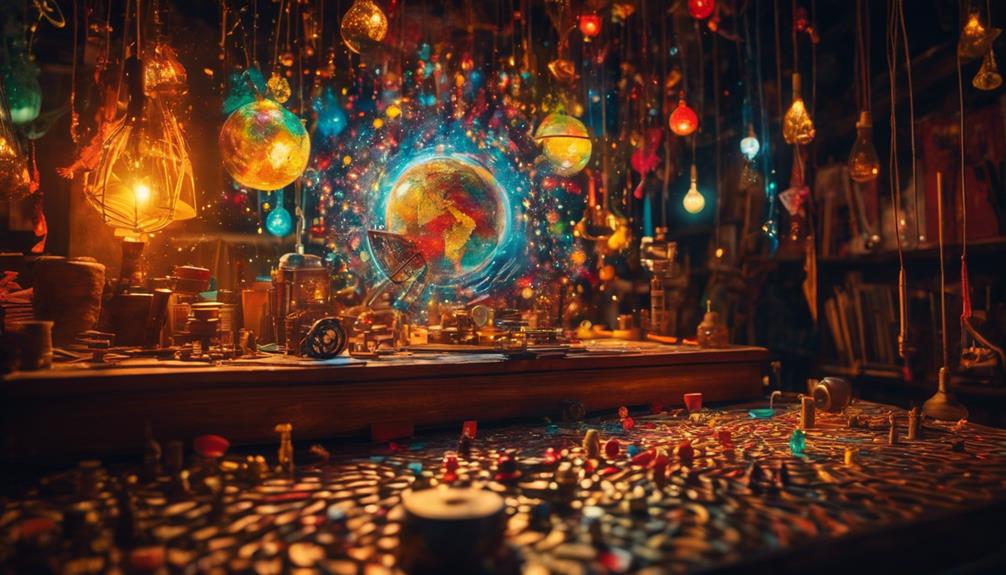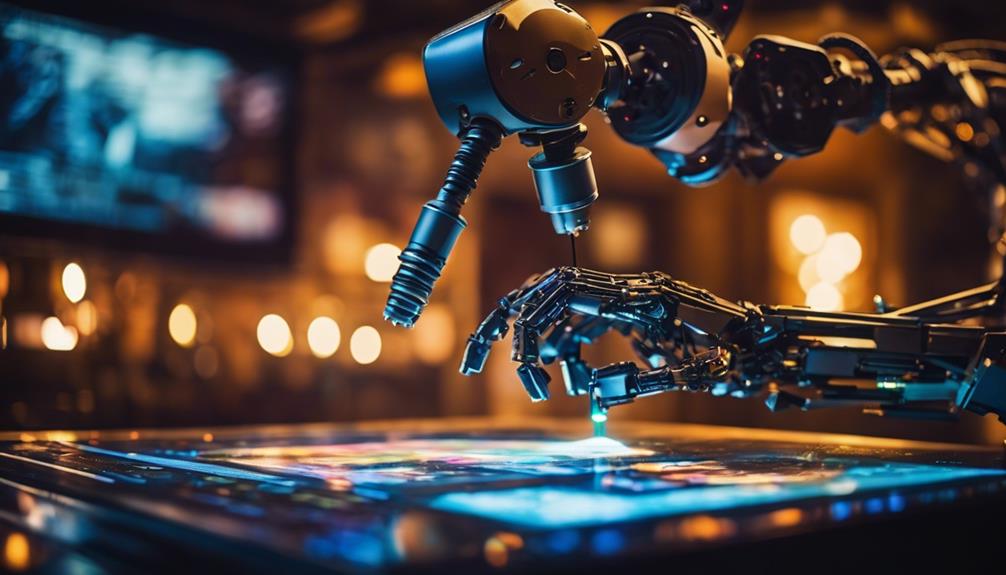AI Art Mastery: 10 Creative Commons Tips
Using Creative Commons is both a gift and tricky for artists in AI art. Combining artificial intelligence with creative work under open-source licenses requires a clear understanding of the rules, ethics, and how-to. This guide will show you the top strategies for creating AI art successfully, from picking the right Creative Commons license to making your art prompts work harder for you. Let’s dive into these tips to see how they can change how you make art and lead the way in digital creativity.
Choosing the correct Creative Commons license is crucial. It’s about finding the balance between protecting your work and sharing it. Each license has its own set of rules, so picking one that fits your goals is critical. This ensures your artwork stays yours while allowing others to enjoy and use it.
Improving your art prompts is another vital step. A well-crafted prompt can result in more unique and engaging artwork. Think of it as giving directions; the more precise you are, the better the outcome. This is where you can get creative and push the boundaries of what your AI can do.
In short, mastering AI art with Creative Commons isn’t just about knowing your tools and the game’s rules. It combines legal knowledge, creative thinking, and technical skills. By following these tips, artists can protect their creations and inspire new art forms.
Key Takeaways
Navigating the realm of AI art with Creative Commons offers both opportunities and challenges for artists. To harness the full potential of AI in art creation while respecting open-source licenses, artists must be well-versed in the regulations, ethical considerations, and practical steps involved. This streamlined guide highlights three essential tactics for thriving in the AI art sphere, emphasizing the importance of selecting the appropriate Creative Commons license, refining art prompts, and understanding the intersection of legal, creative, and technical expertise. Here are the key takeaways distilled into concise recommendations:
- Pick a suitable Creative Commons license: Balance protection and sharing.
- Craft better art prompts: Clear directions yield better results.
- Mastering AI art involves legal savvy, creativity, and tech skills.
These strategies safeguard artists’ creations and fuel the evolution of new art forms in the digital age.
Understanding Creative Commons
Understanding Creative Commons licenses is critical for anyone who creates or uses content, especially in today’s fast-paced digital environment. With the rise of AI in arts, knowing these licenses helps legally use and create new works. Creative Commons licenses clarify what is allowed with someone’s work, boosting creativity and lawful sharing.
For creators, these licenses spell out how others can use their work. This is crucial for maintaining control while allowing their art to inspire and be part of new projects. For users, it means knowing how to interact with, change, or share someone’s creative output. This is especially important when AI can quickly alter artworks, ensuring these changes respect the original creator’s wishes.
Understanding these licenses helps everyone navigate copyright issues in our digital age. It ensures that using and sharing creative works is legal and respects the creator’s permission.
Selecting the Right License

Choosing the correct Creative Commons license for your AI-generated artwork is a big deal. It sets the rules for how others can use, share, and build upon your work. With options like CC0, CC BY, and CC BY-SA, each license offers different levels of freedom. It’s all about matching your vision for your art with the correct permissions.
When deciding on a license for your AI art, think about how you want your work to be used. Whether you’re okay with people using your art freely or if you want to be credited every time someone uses it, there’s a Creative Commons license that fits. Make sure to read each license carefully. This ensures your choice supports how you want your artwork to be shared and used, making it easier for others to enjoy and innovate with your creations legally. Choosing the correct license lets you share your AI art confidently, knowing the rules are clear and legally sound.
Choosing AI Art Generators
Choosing the right AI art generator is critical for artists who blend artificial intelligence with their creative skills to craft visually captivating artworks. Leading tools like Stable Diffusion, Midjourney, DALL-E, HypoArt, and Artbreeder stand out for their diverse functionalities, ease of handling, and high-quality outputs. To find the tool that best fits your creative vision, trying out these platforms to check their user-friendliness, customization capabilities, and the excellence of the artwork they generate is advisable.
| AI Art GeneratorNotable Features | |
|---|---|
| Stable Diffusion | Highly customizable, excels in creating scenes |
| Midjourney | Distinct aesthetic styles |
| DALL-E | Creates photorealistic images with advanced AI |
| HypoArt | Focuses on abstract and conceptual art |
| Artbreeder | Enables collaboration, mixes image ‘genes’ |
Experimenting with these platforms’ vast AI-generated images can spark new ideas and elevate your artistic endeavors. It’s crucial to pick an AI art generator that matches your style and preferences and opens up new possibilities for creating distinctive and visually appealing art.
Writing Effective Prompts

In AI-generated art, crafting precise prompts is vital for artists seeking the best results from their digital tools. This discussion will offer insights on how to sharpen those prompts, focusing on the need for detail and how to arrange your ideas so the AI can understand them better. We’re here to provide artists with the knowledge to get what they envision from AI art generators.
Creating the perfect prompt requires being specific and knowing where to put each piece of information. This ensures the AI can easily interpret what you’re asking for. It’s all about clarifying your intentions so the outcome closely matches your creative vision.
Crafting Clear Prompts
Creating effective prompts for AI art generation means being specific about the art style, colors, and lighting. This helps guide the AI to produce art that aligns with your imagination.
Mentioning an art style inspired by a famous artist early on increases the chance of getting what you want. Also, playing around with different words can show you how they change the look and feel of the art.
It’s essential to give clear directions about the layout and colors to use to make impressive AI art. This systematic way of crafting prompts ensures the AI gets your vision right, leading to precise and meaningful artwork.
Prompt Refinement Strategies
When you’re trying to communicate your artistic vision to an AI for art creation, getting your prompts just right is vital. This means including details like the art style, colors, how light falls in the scene, and the overall layout. These elements help the AI better understand what you’re looking for. If you’re inspired by a particular artist, mentioning their name can guide the AI in capturing their signature style.
To fine-tune your prompts, start with the critical components of your vision. Then, add more details individually to see how they change the AI’s output. This approach lets you know the effect of each keyword on the final image. Being specific about the art style you want can make a big difference. It helps the AI create artwork that’s closer to what you’re imagining.
Enhancing Image Quality

Improving the quality of AI-created images is vital for achieving a professional and attractive appearance. The high resolution makes the artwork more detailed and gives it a refined finish. Programs like Photoshop play a crucial role in this process, thanks to their powerful algorithms that boost image quality while preserving every detail. This is especially valuable for AI art, where keeping the original design intact while fixing flaws is essential.
Photoshop and similar tools can upscale AI-created images, ensuring clarity and sharpness. Use the outpainting feature in tools like DALL-E to add more to your artwork, enriching it with additional context and depth. Tweaking the size and shape of an image can change its impact and attractiveness, offering fresh viewpoints. With Photoshop, you can correct any issues in AI art, improving its overall quality for a professional touch.
Incorporating these methods helps artists refine their AI art, ensuring each piece stands out for its high quality and visual impact.
Expanding Artwork Creatively

Creative Expansion of Artwork
Tools like DALL-E’s Outpainting feature allow artists to extend their canvas imaginatively. This method seamlessly integrates new sections into existing images. Adding elements or broadening landscapes makes the artwork more compelling, providing a more comprehensive visual experience.
Altering dimensions in Midjourney changes the feel and composition of the image, giving viewers fresh perspectives and a stronger connection to the piece.
Incorporating Photoshop editing fine-tunes the images further. Artists can adjust colors, lighting, and composition to ensure the final artwork matches their original vision. Crafting effective prompts is key, guiding the AI to create images that fulfill specific artistic goals and preferences.
This approach is not just about making art look better; it’s about telling a more profound story through visuals. It’s useful for everything from online art displays to enhancing professional presentations. The goal is to make artwork that stands out and resonates with people, using the latest technology to push creative boundaries.
Correcting AI Art Flaws

While the rise of AI tools in art creation opens up many opportunities, it’s vital to tackle the flaws that often come with AI-generated pieces, such as uneven features and mismatched details. These flaws can detract from the artwork’s professionalism and visual appeal.
Image editing software like Photoshop is a standard method for fixing these issues. Artists can correct skewed proportions, tweak off-color tones, and smooth out misplaced elements, improving the artwork’s quality. Learning to adjust elements like lighting, shadows, textures, and the overall layout is critical to overcoming the typical problems seen in AI-created art.
In today’s fast-paced art world, embracing these strategies ensures that art remains engaging and high-quality, blending the best technology and human creativity.
Ethical Sharing Practices

In digital art, it’s vital to share works ethically, respecting the rights of those who create them. Creative Commons is at the forefront, offering licenses that let artists set the rules for how their work is used. These rules ensure artists get the credit they deserve and protect their intellectual property. They also include providing the job isn’t used for profit without permission and that any shared versions respect the original work’s conditions.
Using Creative Commons licenses strikes a balance between safeguarding artists’ rights and giving the public better access to art and information. This balance is critical in today’s fast-paced digital environment, encouraging a culture of sharing and collaboration. Following these guidelines shows a commitment to honoring artists’ wishes and supports a community that values open access and working together.
Engaging With the Community

Engaging in the AI art community is like opening doors to new collaborations and skills. Joining groups on social media and forums helps you swap tips and get feedback, which is excellent for improving your art. These places are not just for showing off your work but also for getting advice that helps you improve.
| Benefits of Community Engagement | Examples |
|---|---|
| Finding New Ideas | Getting involved in community chats, participating in challenges, and showing your work can lead to new ideas and encourage you to try new things in your art. |
| Learning and Sharing Techniques | Websites like Hypotenuse AI and Toolify AI have guides and tools that help you learn faster, especially when you also get tips from the community. |
| Solving Art Problems | When you’re stuck, advice and support from others can help you figure out technical issues or get past creative blocks. |
In short, being active in AI art groups online is all about working together, getting better, and helping each other out. It’s a place for sharing, getting advice, finding inspiration, and learning new art creation methods.
Continuous Learning and Experimentation

In AI art creation, staying updated and experimenting are key. As technology evolves, artists must adapt to keep their work fresh and innovative. This means diving into various art styles and figuring out how different AI tools can make their visions come to life. It’s not just about making things look good; it’s about pushing boundaries and contributing to the art community.
Artists should use online learning resources like tutorials and forums to keep growing. Here, they can connect with others and share knowledge. Staying on top of new trends and tech ensures their art stays relevant. It’s also about daring to try new things, whether playing with unusual prompts or mixing up techniques. This approach doesn’t just improve their work; it helps the whole AI art scene flourish.
Frequently Asked Questions
How Do I Get the Best Results From AI Art?
- Experiment with colors and textures for unique outcomes.
- Mix styles and stick to composition basics for coherence.
- Revise based on feedback for continuous improvement.
How Do I Get the Best Ai-Generated Art?
- Select the right platform for diverse art styles.
- Experiment with different genres for unique creations.
- Set clear goals for your artistic vision.
Can AI Art Be Copyrighted?
- Legal challenges surround AI art’s copyright status.
- Creator rights are central in AI art ownership debates.
- Public domain issues influence artistic freedom and innovation.
How Do You Make Amazing Art With Ai?
- Choose the right tools for your artistic vision.
- Apply color and composition principles.
- Encourage ongoing improvement with feedback.
